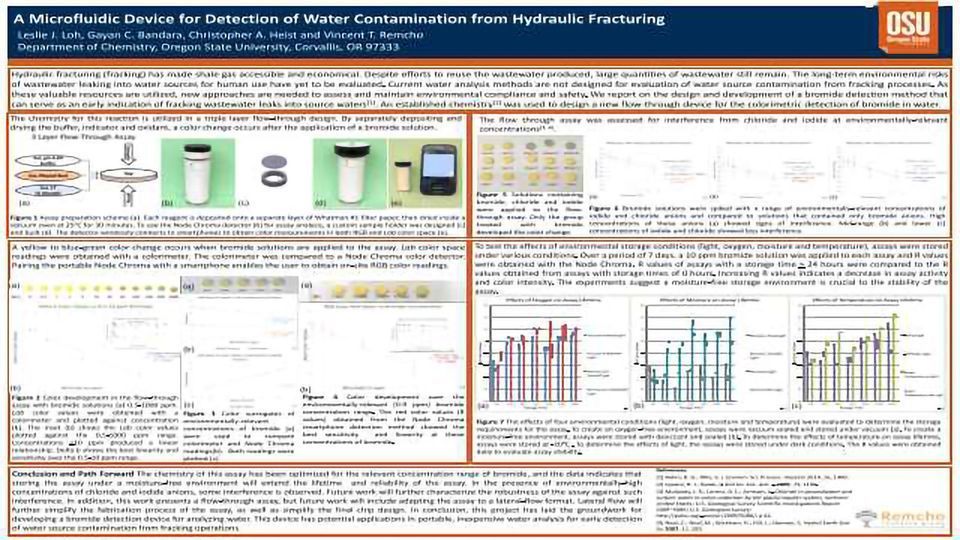A Microfluidic Device for Detection of Water Contamination from Hydraulic Fracturing

While hydraulic fracturing (fracking) has made shale gas accessible and economical, large quantities of wastewater are produced over the lifespan of a well: drilling and fracturing a Marcellus shale well requires approximately 14,000-17,000 m3 of water. Within one year of well completion, 10-25% of the water returns to the surface as a concentrated brine. Although 55-80% of this returned water is reused for other wells, a substantial amount of wastewater is leftover. These large wastewater volumes have prompted the need for appropriate management and monitoring techniques. Current methods for water analysis are not designed for fracking formulations, thus new approaches are needed to assess and maintain environmental compliance and safety as these valuable natural resources are utilized.
To meet these demands, microfluidic tools are being designed, built and applied. These offer the advantages of low cost, simplicity, stability and high adaptability for widespread distribution. Our devices can be interfaced with multiple detection methods, including colorimetric detection using stand-alone, low-cost hardware and the optical hardware on smartphones. Detection of constituents such as bromide, strontium and barium are of particular interest because they are characteristic of the wastewater generated by Marcellus shale gas extraction. Detection can serve as an early indication of wastewater leaks—a crucial tool for preventing source water contamination. Additionally, rapid detection of these elements can be useful for tracking the movement of produced waters, an important process for ensuring safe wastewater disposal. We will present recent outcomes from our work on quantification of fracturing fluid indicators.
To meet these demands, microfluidic tools are being designed, built and applied. These offer the advantages of low cost, simplicity, stability and high adaptability for widespread distribution. Our devices can be interfaced with multiple detection methods, including colorimetric detection using stand-alone, low-cost hardware and the optical hardware on smartphones. Detection of constituents such as bromide, strontium and barium are of particular interest because they are characteristic of the wastewater generated by Marcellus shale gas extraction. Detection can serve as an early indication of wastewater leaks—a crucial tool for preventing source water contamination. Additionally, rapid detection of these elements can be useful for tracking the movement of produced waters, an important process for ensuring safe wastewater disposal. We will present recent outcomes from our work on quantification of fracturing fluid indicators.






